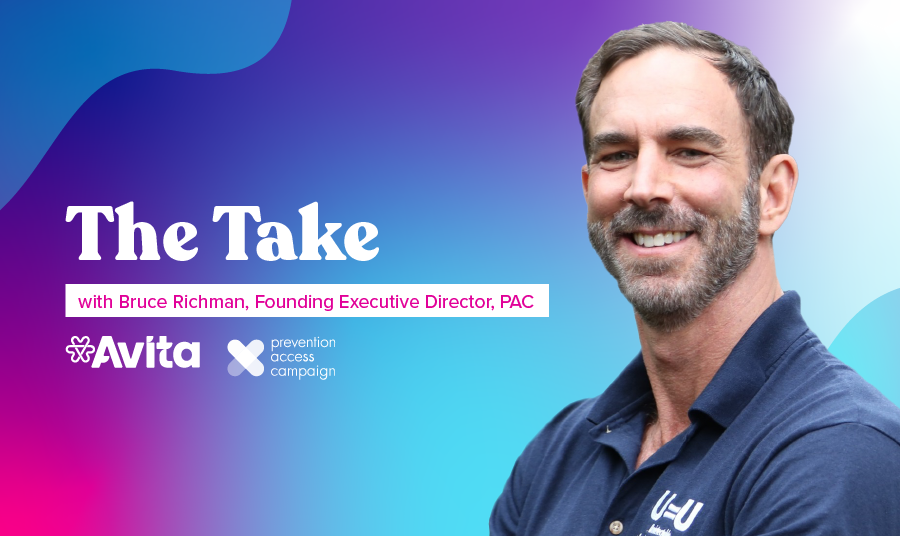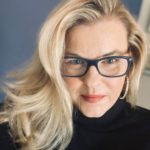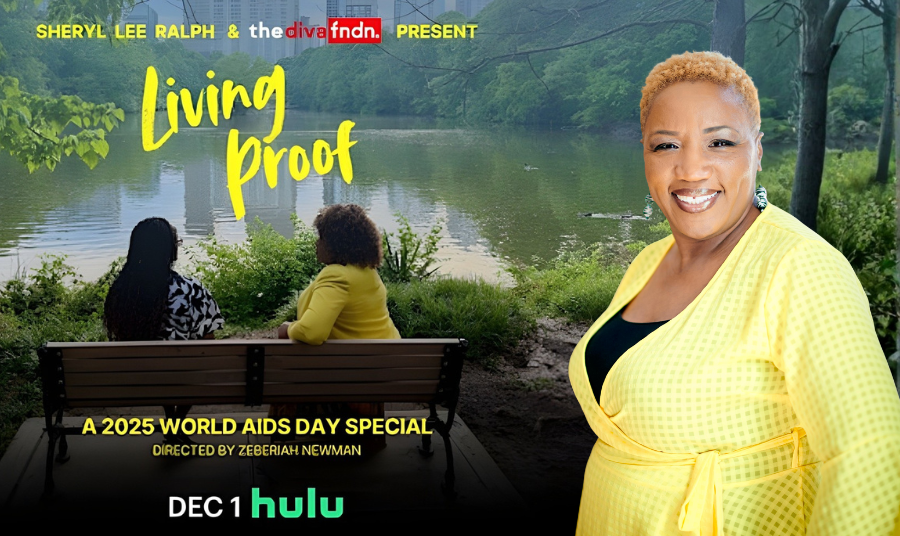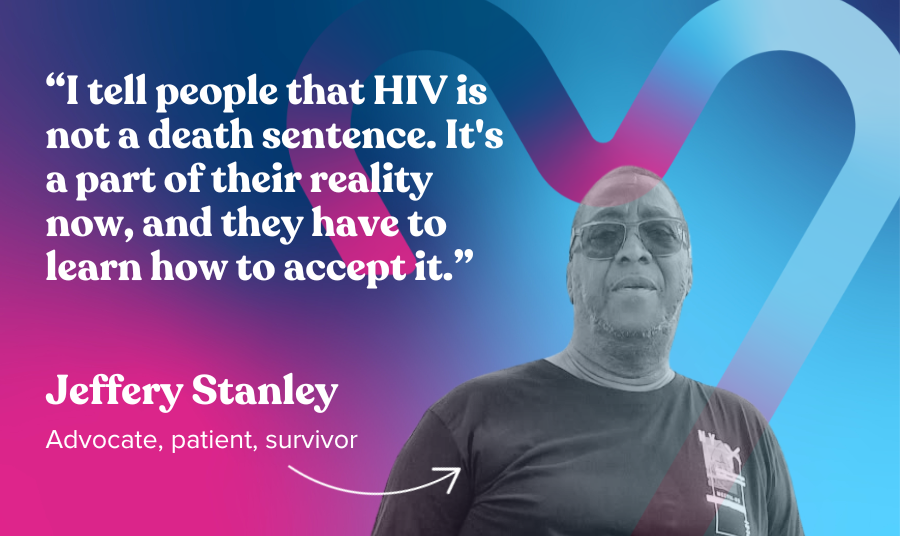He’s been called a “stigma warrior,” a “trailblazer,” and one of the most “powerful members of the LGBTQ community.” But Bruce Richman, founding executive director of the Prevention Access Campaign (PAC) and the man behind the U=U movement, would rather talk about the “real heroes.” In this edition of “The Take,” he chats with Avita’s Glen Pietrandoni about the thousands of activists, scientists, and partners that helped bring the concept of “Undetectable = Untransmittable”—that people living with HIV who are on treatment and have an undetectable viral load cannot sexually transmit HIV—to the forefront. As the campaign’s sixth anniversary rolls around, he explains what originally made the lightbulb go off, how people risked their lives to stand up for the truth, and why the movement is just getting started.
Three years after I learned about the U=U research, there was still no one telling anybody about it. So, I started talking to researchers. I said, "We've got to get this out there."
-Bruce Richman
Founding Executive Director, Prevention Access Campaign
Glen: We first met in 2017 at the U.S. Conference on HIV/AIDS, right?
Bruce: Yes, I remember it was such a difficult time. There was so much fighting [about the concept of U=U] and people were putting out bad information about us saying people living with HIV were at risk. People with HIV and the public were hearing and believing that we’re vectors of disease. There was no time to waste.
It was at that conference that I looked over and Avita had this beautiful exhibit promoting U=U. If you can imagine, at the time the CDC hadn’t aligned yet with PAC on U=U. There were some national organizations behind it, but some of the largest agencies in the United States were still fighting the movement. We were fighting with people left and right.
At the conference we went from table to table to see if anyone was talking about U=U. There were 37 booths that had PrEP information, and nothing telling people that you can’t pass on HIV when you’re on proper treatment. Nothing—except for Avita! I’m not knocking PrEP, but raising awareness about U=U is critical for so many reasons. It means those of us with HIV can finally be free of the fear of passing on HIV! It reduces the stigma associated with HIV. It helps reduce the anxiety of getting tested for HIV, and it’s an added motivation for people with HIV to go on treatment and stay on treatment and in care. And it’s a call for universal access to treatment and care for people with HIV.
So, at the time when it was most important, Avita stepped up for people with HIV. You showed your commitment to this community, and it was extraordinary.
At the time when it was most important, Avita stepped up for people with HIV. You showed your commitment to this community, and it was extraordinary.
-Bruce Richman
Founding Executive Director, Prevention Access Campaign
"We've got to get this out there."
Glen: The CDC got behind U=U in September of 2017. But when did your lightbulb go off about U=U? When did you think, “Oh my gosh, I’ve got something”?
Bruce: It was in 2012. I had been diagnosed as HIV positive in 2003, but in 2012 my doctor told me about the science behind U=U. I said, “Is this true?” and he assured me it was. So, I did the research on it and there wasn’t much out there. There was the Swiss Statement, and then there was HPTN 052, which was the science breakthrough of 2011. I found a video of the principal investigator of HPTN 052, Dr. Myron Cohen from UNC, saying, “My patients are now coming to me to go on treatment, so they don’t pass on HIV to their partners.” And I thought, “This is amazing! But no one knows!”
At the time I was in a different kind of career (Bruce had founded Inspired Philanthropy Group, where he developed philanthropic initiatives with people and brands with extensive public platforms for social change, including Donna Karan, Ellen DeGeneres, Archbishop Desmond Tutu, NBA star Chris Bosh, 7-Eleven, and Sephora). It was fun, and I was helping a lot of people do good with major public platforms.
But three years after I learned about the U=U research, there was still no one telling anybody about it. So, I started talking to researchers. I said, “We’ve got to get this out there.” Other folks wanted more research, but I spoke to some very credible public health officials from the biggest departments in the U.S., and some HIV positive leaders in the community, and they knew it was true. It just made sense that we had to tell everyone. (Bruce founded PAC in 2015 and launched the U=U campaign in 2016).
The first step was to build a science-based global consensus on U=U. Then we would use that statement to go out and get influential people from organizations to sign on and confirm what we knew was true. Once we had that scientific statement and an advocacy video of people demanding the truth about their bodies, it really just snowballed. And fortunately, we found organizations like Avita that stood up when it was a big risk and joined the movement when we really, really needed support.
Fortunately, we found organizations like Avita that stood up when it was a big risk and joined the movement when we really, really needed support.
-Bruce Richman
Founding Executive Director, Prevention Access Campaign
The heroes willing to stand up for U=U
Glen: Today, you’ve grown U=U into an international phenomenon. But it must have been really challenging in the beginning because you were trying to get people to pay attention and make space for making a difference.
Bruce: Yes, it was. But I was lucky to find a lot of heroes and people who risked a lot more than I did. Like Dr. Demetre Daskalakis, who was then heading up the HIV/AIDS division for New York City (and is now the CDC’s Director of the Division of HIV/AIDS Prevention). He was the first public health official to put himself and a major city behind the message in 2016. He risked his personal and professional reputation and the city’s to do that.
There are people in parts of the world who risked their lives. In Northern Ireland, there was a young man who came out as gay and living with HIV and started handing out U=U information and telling people, “I can’t pass on HIV to anybody, I’m no longer infectious.” He had paramilitary following him around. We had to put him up in a safe house.
Doctors in Thailand have gotten death threats because they’re supporting U=U, and my colleagues have been told there’s blood on their hands. I’ve been called a danger to public health.
But I didn’t risk anything. I wasn’t in the field, I wasn’t trying to advance my career, I didn’t have a board of directors I had to report to. I’m humbled by these heroes who were willing to stand up.
Doctors in Thailand have gotten death threats because they're supporting U=U, and my colleagues have been told there's blood on their hands. I've been called a danger to public health.
-Bruce Richman
Founding Executive Director, Prevention Access Campaign
Next up: Showing U=U is a win-win
Glen: I just got chills. So, while it’s officially six years since the start of U=U, it’s actually 10 years since your lightbulb went off. What’s happening next?
Bruce: It took some time to invest in the U.S. and build a very solid team here. The Feds have now really gotten behind U=U and updated the guidelines, and many U.S. state and city departments of health are getting behind it. We’ve had some trouble getting this on the national agenda, but I’m confident it’s starting to change.
In the U.S., we still have work to do. We need a strong and clear national campaign. We need the nation’s largest communication agencies that have money, power, and networks to make U=U a priority in testing, treatment, prevention, and anti-stigma communications. We need a wide range of medical associations to offer training and require knowledge of U=U as part of certification. We need grantmaking organizations to develop U=U specific funding streams. We need to fully integrate U=U education and access as a requirement in the U.S. national response. It’s time to really celebrate this news like we’re seeing in other parts of the world.
We had three goals when we started the movement: The first was to build a scientific consensus to confirm the science, and we did that. From the WHO to the CDC, the science and the message of U=U has been endorsed. The second goal was to disseminate the science through a network of partners. Our network is now made up of 1050 partners in 105 countries, and they’re tailoring the message to key affected populations. We’re still working with our partners on goal number two.
U=U is a win-win, because when people with HIV are healthy, everyone stays healthy.
-Bruce Richman
Founding Executive Director, Prevention Access Campaign
The third goal is to ensure that people with HIV have access to the treatment, the care, and the services to get to undetectable. We need to increase access and remove the barriers to U=U, because when people achieve it they stay healthy and can’t pass on HIV. That’s the key to ending the epidemic.
What we’re doing now is really focusing on access issues on every continent. We’re looking at the barriers people living with HIV face to achieving U=U. There are so many social, structural, and legal barriers, and they differ according to the region. It could be patient transport, or lack of access to sensitive viral load testing, or the stigma of clinics. There’s racism, housing issues, food security, and lack of basic needs.
We call this the U=U Win-Win Strategy. We’re going to policymakers and other people who have levers of funding and saying to them, “If you want to end the epidemic, you need to invest in the health and well-being of people with HIV.”
This is a health and human rights issue. [People living with HIV] need access to treatment, and we need to reduce these barriers to health. Because health care is a human right. But the reality is that when we talk to governments about ending health inequities…some of these governments have set up the system to be unequal, right? We’re talking to people in power who benefit from inequality. But if we show them how reducing these health inequities will benefit their countries by helping them achieve their goals of epidemic control, it’s going to go a lot farther in terms of advocacy. That’s what our global team is focused on right now, the concept in advocacy that U=U is a win-win, because when people with HIV are healthy, everyone stays healthy.
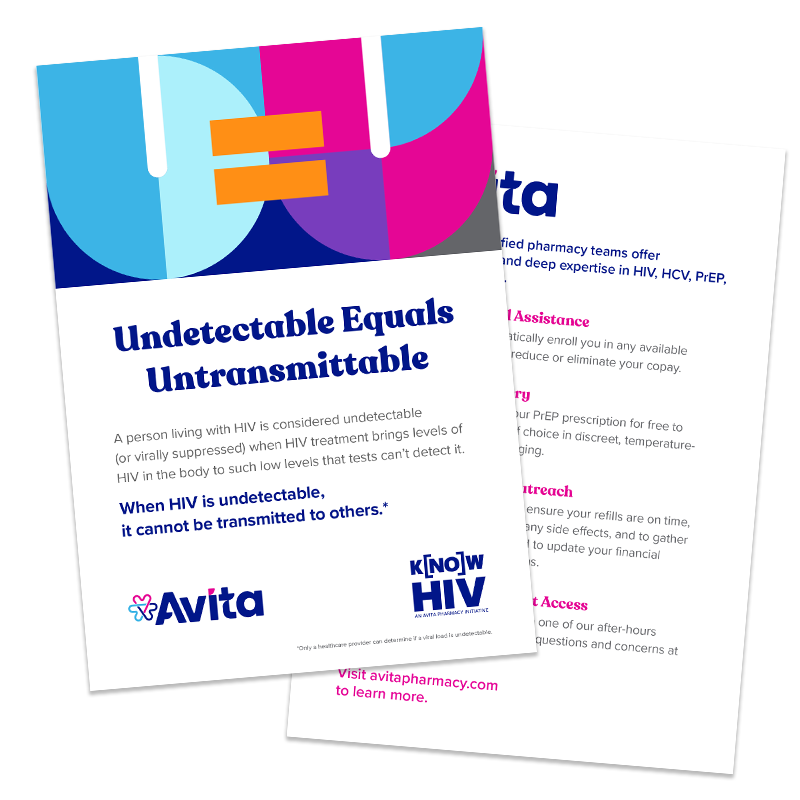
A sample of Avita’s current patient-facing U=U materials
How to support the U=U movement
Glen: Last question: From a patient, provider, or concerned citizen perspective, what can people do to help the U=U movement?
Bruce: What’s most important is that we share the message clearly, confidently, consistently, and consciously. We need to make sure there is no doubt: U=U is 100% effective at preventing HIV. For patients, that means taking your medication and having your labs done regularly. You can live and love just like everyone else.
Health care professionals also need to be clear about it. U=U is still new information, and it’s hard for people to process it. They might read that the CDC is 100% behind it, but it’s still a radical change, and it goes against what they’ve been saying about people with HIV and HIV transmission for 40 years. Some providers will say, “Well, U=U, but you never know, use a condom just in case.” We’ve got to help people get over that fear of change, which is human nature. Those irrational and unnecessary cautions and fear take away the joy and freedom of U=U. It’s so rewarding to share news with someone living with HIV that they can’t pass on HIV! Come to PAC’s website; get the facts.
In the United States, we know that stigma against those living with HIV is still really persistent. PAC was involved with a recent study that showed 28% of millennials said they have avoided talking to, hugging, or being friends with people living with HIV. So, we’ve still got a lot of work to do here. Everyone can help get the message out. We love armchair activists; we love people who will share on social media and join the movement by using the #UequalsU hashtag. If anybody has resources they can share—whether they have a PR firm, can put up a poster in their storefront, or just tell family members about U=U at dinner—everybody has a role to play. Sign on as a community partner. This movement has reached all over the world because of the grassroots community. People are rising up.
This movement has reached all over the world because of the grassroots community. People are rising up.
-Bruce Richman
Founding Executive Director, Prevention Access Campaign
About Bruce Richman:
Bruce Richman is the founding executive director of Prevention Access Campaign (PAC), which united activists and researchers in 2016 to build and communicate a scientific consensus about a largely unknown fact: People living with HIV who are on treatment and have an undetectable viral load cannot sexually transmit HIV. PAC named this concept “Undetectable = Untransmittable” or “U=U.” Today, U=U is a thriving and growing community-led health and human rights movement of activists, researchers, and over 1,000 Community Partners from 105 countries. U=U has been endorsed by the global medical and scientific community, including the World Health Organization, Centers for Disease Control and Prevention, National Institutes of Health, and UNAIDS. Together, we are changing what it means to live and love with HIV around the world.
Bruce and the U=U campaign have been featured extensively in national and international media including The Washington Post, TODAY show, USA Today, China Global Television, CNN, The Guardian, Daily Mail, CBC Canada, South Africa Medical Digest, and JAMA. Bruce co-authored articles in The Lancet, New England Journal of Medicine, Sexually Transmitted Infections; and AIDS and Behavior, and has presented about U=U at conferences and symposiums in over 25 countries.
Bruce was humbled to have received recognition on behalf of the work of U=U activists around the world including Healthline magazine’s HIV “2017 Person of the Year;” 2017 Partnership Award from the United States National Alliance of State & Territorial AIDS Directors; Plus Magazine “#1 Most Amazing HIV+ Person of 2018;” Red Ribbon Award from Vietnam’s People with HIV association in 2019; Shelby Hodge Vision Award from AIDS Foundation Houston in 2019; #15 of New York’s 100 “most powerful members of the LGBTQ community” in the 2019 Pride Power 100 and again in 2020, 2021, and 2022; “Stigma Warrior” award at Howard University’s 2021 International Conference on Stigma; Martin Delaney Power of One Award from Positive Living Conference in 2021; and Hyacinth Award from Hyacinth Foundation in 2021.
Bruce has been working in public service and social change for 30 years. He received his master’s in education from Harvard Graduate of School of Education and his law degree from Harvard Law School.
About Glen Pietrandoni:
Glen Pietrandoni is SVP of Patient and Community Advocacy at Avita, where he’s deeply engaged in Avita’s mission as an industry advocate and thought leader for HIV patient care and continuation of the 340B program benefiting its patients and partners. Glen is responsible for networking with pharma and government officials to represent Avita’s views and discuss industry activity. He leads the efforts to advance Avita Pharmacy programs and continues to look at educational opportunities that improve the health and the lives of the patients it serves. Glen serves on the Board of Pharmacy for the State of Illinois, is Chairman of the Board of Trustees of AIDS United, and sits on the board of CV340B. He has earned American Academy of HIV Medicine and Apexus 340B certifications.
